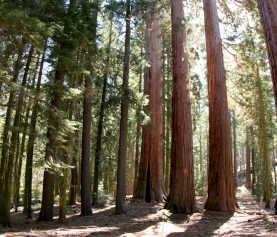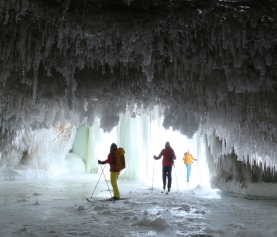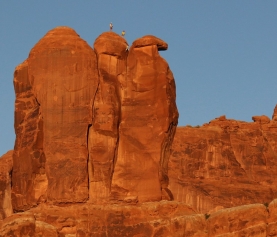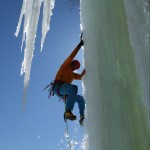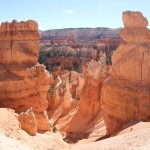Many of America’s most remote national parks are found in the northern reaches of the Alaskan outback—but for those who endeavor to get there, the prize can be priceless. At least that was the theory when director of photography Brad Ohlund headed by floatplane to Katmai National Park, an active volcanic landscape famed for some of the best bear viewing in the world—that is when the bears show up. Each year, grizzly bears typically arrive in great, lumbering numbers to sate their bear-sized appetites as salmon flood the Brooks River. With an estimated 2,200 bears inhabiting the park, visitors can luck upon unparalleled views of these fascinating creatures in a sanctuary-like setting.
But when Ohlund and his small team arrived in Katmai, and pitched their tent in Brooks Camp, there was just one problem: no bears yet. The bears show up on their own schedule so there was no choice but to wait patiently in the cold and the damp. Fortunately, patience did indeed become virtue.
“We were getting a bit concerned at the mounting cost of our trip, and I was also getting a head cold, when suddenly, we got our first shot of a bear catching a fish,” recalls Ohlund. “From there it just got better and better. Suddenly, there were literally bears everywhere you looked.”
Befitting the MO of National Parks Adventure, the mission was to capture the bears in innovative visuals that would take audiences more fully into the moment. “The first thing that Greg told me was he wanted to see the bears in slow-mo,” recalls Ohlund. “But that’s not an easy thing, technically, because the camera we would normally use for that is a monster and wouldn’t have been possible to use in such a remote location.”
Ironically, it takes very high-speed, or high frame-rate, cameras to provide the kind of slow-mo that can offer gloriously subtle details in animal behavior. After considerable research, Ohlund opted to use the agile Phantom Flex 4K digital camera from Vision Research, a pioneer in slow-mo photography. “That camera can shoot 970 frames per second at 4K raw,” he says, “which gave more than we need to get extreme slow-motion. Our origins at MacGillivray Freeman lie in surf films and making those, we learned that every subject has a frame-rate where the magic happens. With the bears it turned about to be about 200-300 frames per second—slow enough to really see their movement and expressions in detail but fast enough to keep your attention rapt.”
Joining Ohlund in Katmai was Mark Emory, a gator wrangler he’d met on Hurricane On The Bayou—who turned out to spend the other half of the year in the north, with a home right outside Katmai. With his rich local knowledge, Emory played a key role—including re-routing tourists. “One of our biggest problems once the bears arrived was that we had hundreds of people on a park service platform where we could get our best shots—and if a single person moved it bounced the camera! So Mark scouted out alternative places for great still photographs and led people there. It worked out for us, but he also turned out to be another great ambassador and people got the shots they wanted.”
Throughout Ohlund says local rangers were also tremendously helpful. “Wherever we went on this film, we found that all the rangers were very supportive of the film and really let us push the envelope,” he says. “We were able to get right up to the edges.”
A few close calls, however, reminded Ohlund of just how essential it is to respect an intelligent predator who can overpower you in seconds, camera or not. “We had one 600 pound bear approach us thinking we might be a good lunch and, even though we’ve done a lot of wildlife shoots, a 600-pound bear gives one pause!” Ohlund confesses. “He started coming right at us. I’d heard a rumor that if you break tree branches it will discourage a bear because they think another bear might be coming through the trees. And luckily in this case that worked!”
At one point, a pair of bears ran past so close to Ohlund he was nearly tickled by their fur on his skin, and in yet another heart-pounding encounter, Ohlund ran into a bear on the beach and got some totally unplanned shots. Yet, Ohlund also notes that with rangers constantly emphasizing bear safety—for the bears’ sake as well as for the human visitors—mishaps are a rarity.
“It’s pretty amazing that for the most part they have had no problems between bears and people on Katmai,” he says. “It’s one of the most fascinating places I’ve been.”
When Ohlund returned with his hard-won bear footage, one particular story charmed everyone: that of an immature bear learning to catch salmon with all the endearing frustrations of an awkward youngster. “I think the most satisfying moment in the film is when that hungry bear finally manages to figure it out,” muses writer Stephen Judson. “The suspense kills me!”


